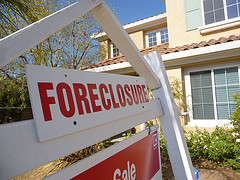 Overview
Overview
If you are a homeowner interested in and qualify for a loan modification, it is important to keep in mind that the lender is forgiving a portion of your debt. There are several types of loan modifications that a lender can offer you: interest rate, length of amortization, principal balance reduction for a first mortgage as well as for a second mortgage. Principal balance reduction is the most coveted approach of all loan modifications. Make sure to avoid quick fix loan modifications that may be offered to you such as a simple forbearance, short sale, deed in lieu, or temporary interest rate reduction. These types of loan modifications may seem appealing at first, but they will generally hurt you in the medium- to long-term.
While your home can be repossessed through foreclosure if payments are not made, the lender or the loan modification company cannot make any changes unless all individuals on the mortgage agree. Your notarized permission must be received to implement any changes.
—————
Interest Rate
The simplest feature in a loan modification that can be adjusted by a lender is the interest rate. If the interest rate is lowered, so is the mortgage payment.
If you are a homeowner who originated a sub-prime short term adjustable rate mortgage several years ago at 5% and then saw it adjust to 9%, for example, you probably are having quite a bit of difficulty making the additional monthly payment. Now that loan modifications are more available from lenders, you have another option.
All lenders are willing to aggressively lower interest rates for loan modifications to qualified applicants when they are not requesting a reduction of the balance reduction of the mortgage or an increase in the length of amortization. A lower interest rate on the mortgage is the simplest, safest and most cost effective loan modification for lenders.
Length of Amortization
Length of amortization refers to how many years a borrower will be paying back the mortgage. The most typical timeframe is 30 years. The amortization does not reflect the length of time that the interest rate is fixed, just the total years that the mortgage will be repaid. For example, if you have a five-year adjustable rate mortgage amortized over 30 years, the interest rate will adjust after five years and can adjust up or down for the remaining 25 or until refinanced. In order to make payments more affordable, a lender may offer you the option to stretch out the loan modification payments over 40 or 50 years. This will lower your monthly payments considerably since you would now have an extra 10 or 20 years to pay off the loan modification. Any recalculation of the amortization is always done using round numbers. The options for loan modification are 30, 40 and occasionally 50 years.
Stretching out the amortization in a loan modification does not help the higher interest rates nearly as much as it helps the lower rates. During the mortgage boom, sub-prime lenders were much more inclined to offer longer amortization for loan modifications since they were qualifying the borrower with around the same payment as the 30-year loan but they were collecting 10 more years worth of interest.
Stretching out the amortization for a loan modification has additional benefits. Borrowers who paid interest only payments for the first few years were not paying down any principal. That means that your loan lost a year of amortization each year. Therefore, if you were to have kept your loan, it would have converted after the interest only period into a fully amortized fixed loan of usually 20 or 25 years. Those payments are enormous compared to the new 40- or 50-year term. Lengthening the years of repayment in a loan modification might be helpful but usually not enough to turn around a troubled homeowner’s financial situation.
Principal Balance Reduction
The principal balance reduction is the most coveted of all loan modifications. The lender is forgiving a portion of your debt. Simply speaking, you just do not owe that money any more. Banks and lenders are very reticent to do this because this is a loss that is not recoverable and therefore not given away easily.
When banks or lenders do grant a principal balance reduction, it is because the value of the property is so much less than the balance owed that there is no reason for the homeowner to remain. If you owe $500,000 on a $400,000 property, would you want to pay those huge mortgage payments only to realize that you are still upside down? Even if you were to wait it out until the market recovers, you would not know how long it would be until the property value appreciates to $500,000 again. It would be wiser to walk away from the home, take the credit hit, and rent a very similar house down the street for half the monthly payment.
Principal balance reductions help in more ways than just reducing your debt. It also reduces your payments and the amount of interest you pay over the life of the loan.
Principal Balance Reduction involving a 1st and 2nd Mortgage
Principal balance reductions are much easier to get when you have a first and a second mortgage because in the instance of a foreclosure, the lender of the second mortgage is likely to get nothing. The proceeds from a foreclosure will result in the first mortgage getting paid off first. Then whatever is left over goes to the holder of the second trust. Holders of second mortgages are absorbing massive losses while recuperating nothing. Since lenders realize this, they are much more likely to grant a reduction. The banks or lenders would rather get 10 to 20 cents on the dollar rather than nothing. If you cannot make your payments, you are going to lose your house. Lenders are going to do what it takes to prevent that. If the same lender owns your first and second mortgages, you are in the overall best position for a principal balance reduction.
 A hardship letter is a letter written to your bank or mortgage company telling them why you can no longer afford to make the payments on your home. This letter describes your hardships and specifically what has happened that caused you to fall behind.
A hardship letter is a letter written to your bank or mortgage company telling them why you can no longer afford to make the payments on your home. This letter describes your hardships and specifically what has happened that caused you to fall behind.

![Reblog this post [with Zemanta]](http://img.zemanta.com/reblog_e.png?x-id=da26d387-62eb-4ac0-ad41-f4721c6fa94a)

 Overview
Overview![Reblog this post [with Zemanta]](http://img.zemanta.com/reblog_e.png?x-id=2633b3dc-26b9-4212-a353-757e3ac98763)

 Overview
Overview![Reblog this post [with Zemanta]](http://img.zemanta.com/reblog_e.png?x-id=d2781a90-d5db-47c8-947e-0e1da18bcccd)

 Overview
Overview![Reblog this post [with Zemanta]](http://img.zemanta.com/reblog_e.png?x-id=736fa50c-ff0f-4bab-9813-dada817428ed)

 Overview
Overview![Reblog this post [with Zemanta]](http://img.zemanta.com/reblog_e.png?x-id=3c26b71d-8446-49f9-9d92-8c134220b708)


![Reblog this post [with Zemanta]](http://img.zemanta.com/reblog_e.png?x-id=dd03937c-f45e-4531-b72d-80b30a6fe215)
